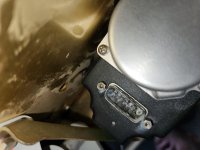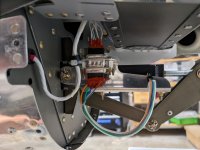Good day all,
I’m finishing up the final stages on a -12iS tailcone kit. On page 11iS/U-10 step 3: Seal all openings on the wire insertion side of the servo’s D-sub using RTV.
Does this mean both d-sub housings or just the ast servo motor side? It’s the bottom half of this connection.
Also, should the silicone be forced into the pin insertion area or just form a blob around the wires to prevent bending the wires at the pin crimp?
Thanks, This site is a tremendous source.
I’m finishing up the final stages on a -12iS tailcone kit. On page 11iS/U-10 step 3: Seal all openings on the wire insertion side of the servo’s D-sub using RTV.
Does this mean both d-sub housings or just the ast servo motor side? It’s the bottom half of this connection.
Also, should the silicone be forced into the pin insertion area or just form a blob around the wires to prevent bending the wires at the pin crimp?
Thanks, This site is a tremendous source.






